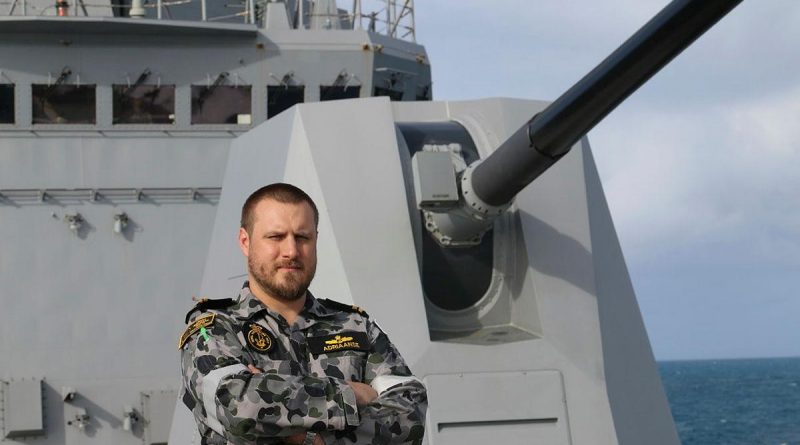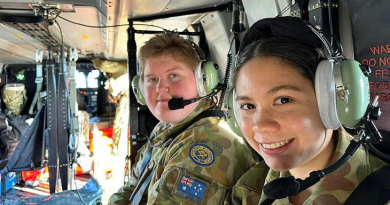Officer’s US training brought to bear at Talisman Sabre
Share the post "Officer’s US training brought to bear at Talisman Sabre"

The knowledge gained from learning a powerful maritime weapons system while on exchange with the US Navy has been a significant benefit to Lieutenant Nick Adriaanse during Exercise Talisman Sabre (TS21).
CAPTION: Weapons Electrical Engineering Officer Lieutenant Nick Adriaanse stands on the forecastle of HMAS Brisbane while sailing off the east coast of Queensland. Story by Lieutenant Sarah Rohweder.
Hailing from Petersborough, SA, the deputy weapons electrical engineering officer (DWEEO) spent several years in the US learning about the Aegis Combat System, a computer and radar capability that provides an advanced air defence to engage enemy aircraft and missiles.
It has a range of more than 150km and is the same system installed on Navy’s three Hobart-class destroyers, including HMAS Brisbane where Lieutenant Adriaanse is embarked for the duration of TS21.
He said he was looking forward to applying the knowledge gained from his exchange to live serials conducted with Australia’s regional partners in the waters off Queensland.
“I love having the opportunity to put into practice the large amount of knowledge in the Aegis Combat System that I developed over the past few years while posted on exchange,” Lieutenant Adriaanse said.
“Paired with other fleet units, the Hobart-class DDG is an impressive force-multiplier and reflects our best ability to shape, deter and respond to threats in the air domain.”
During TS21, Brisbane is acting as the Air and Missile Defence Commander, responsible for defending the multinational task group from enemy aircraft and missiles, and providing air-control services to de-conflict aircraft movement within the battlespace.
It is the first time one of Navy’s new destroyers has participated in the exercise.
As the DWEEO, Lieutenant Adriaanse is in charge of Brisbane’s weapons electrical engineering department, including the maintenance of all weapons and sensor systems.
“To achieve our maintenance, we need to turn off our systems, which directly conflicts with the goals of the warfare commander,” Lieutenant Adriaanse said.
“Therefore, a significant amount of coordination and planning is required to ensure our maintenance activities are achieved to maintain the seaworthiness of our systems without compromising the warfare commander’s situational awareness or ability to respond.”
.
.

.
.
Share the post "Officer’s US training brought to bear at Talisman Sabre"





